Home Made Olives
From thegoldminer 17 years agoIngredients
- 1. green olives shopping list
- 2. Lye shopping list
- 3. Long rubber gloves, up to your elbow shopping list
- 4. Goggles shopping list
- 5. Scale shopping list
- 6. Large spoon shopping list
- 7. One gallon bucket, for measuring water, the red one is from Ace hardware. shopping list
- 8. table salt (I buy 50 bags at Smart and Final) Of course for small batches, the salt from any grocery store will work. With or without iodine. shopping list
- 9. Strainer bucket - The strainer bucket is my idea. I purchase it from a restaurant supply house, attached a handle at the bottom to make it easier to control and attached two plexiglass ears to keep the olives from spilling out. The olives pour beautifully with the ears. You can drill holes all over a five gallon if you can't get a strainer like in the pics. shopping list
- 10. Plexiglass lid - Originally the recipe called for placing towels on the olives to keep the air from discoloring olives. I came up with the plastic lid, it should be 10 7/8 inches in diameter. The plastic lid is perfect. shopping list
- 11. 5 gallon bucket, I purchased all orange buckets from Home Depot. These are dedicated to olive making. Buckets are rinsed when finished and placed in 55 gallon plastic bags until next season. shopping list
- 12. Anyone who would like the printed recipe from the University of Davis can send me a fax number. shopping list
How to make it
- 1. Caution the lye can cause severe burns if it touches your skin. Have vinegar at ready to neutralize the lye in case of accident. I feel it important to advise working with lye has its dangers. Use this recipe at your own risk. This recipe is from the University of Davis.
- 2. Note, it is very hard to buy lye as it was taken off the retail market as drug makers where using it to make drugs. You have to go to a chemical supplier, show your drivers license, and state the use of the lye.
- 3. Clean olives of stems and leaves and rinse
- 4. Set up area to weigh lye
- 5. Wear gloves and goggles
- 6. Using the one gallon bucket, pour two gallons of water in the five gallon bucket
- 7. Weigh out 5 1/2 ounces lye for two gallons of water
- 8. Do not allow water to touch lye while weighing
- 9. Exert extreme caution when weighing lye
- 10. Carefully pour lye in the five gallon bucket
- 11. Stir water and lye. The lye will heat up the water, it will be hot!!!!!!!
- 12. Allow to cool for 15-30 minutes.
- 13. Carefully pour 20 lbs of olives in water, stir.
- 14. Carefully place plastic lid on olives. This prevents air from discoloring olives.
- 15. Place lid on bucket.
- 16. Using gloves, remove an olive after two days and cut a wedge. The olive should be green all the way to the pit. If there is white, carefully pour off lye water, make a new solution and check again in 24 hours. If still not green, another 24 hours should get the lye to the pit.
- 17. Once you see green to the pit, pour olives with lye solution carefully off into the strainer bucket. Capture the used sly solution and neutralize with vinegar. Allow water to evaporate and put remaining residue in a covered bucket, there will be very little material that is harmless.
- 18. Rinse 5 gallon bucket, fill with water to the top, pour about 2 gallons over the olives in the strainer bucket. You will see more dark color coming off the olives.
- 19. With about three gallons of water still in the five gallon bucket, pour olives in the bucket. Stir, place plastic lid on olives, place lid on bucket.
- 20. Wait 8-10 hours, pour olives back into strainer bucket, again rinse with two gallons, place back in bucket with water.
- 21. Wait 24 hours. Repeat rinsing.
- 22. Wait 8-10, repeat rinsing.
- 23. Wait 8-10, repeat rinsing. At this point it is safe to place your bare hand in the water. To determine if the lye is totally removed, stir the olives with your hand, stirring all the way to bottom of the bucket. There should not be any kind of a slick feel, like soap. If any slickness, rinse again. Of course rinse your hand and arm after stirring and feeling the olives.
- 24. Once the olives are free of any soapy feel, rinse once more.
- 25. To store olives, place 3 cups of table salt per gallon of water and place two gallons of water in the bucket. Stir the water well to dissolve the salt. Put olives in the brine mixture, cover with plastic lid, and place the lid on the bucket. This ratio will make the olives very salty but allow them to stay preserved for a couple of months in cool weather. Best if kept under 70 degrees or less.
- 26. To eat the olives, place an amount in a bowl of fresh water. Allow to sit overnight. Pour off water and taste olive. If too salty, repeat with new water until they are to your liking.
- 27. Homemade olives are addictive, you can't eat one.
- 29. Black olives in the can are really green olives just like from this recipe. Commercial canners use their own process of oxidation to turn the olives black. Yep black olives are green olives in disguise. They have to turn them black as various colors of green olives in a can would not be appealing to consumers, so they turn them black and everything is pretty. How about that!
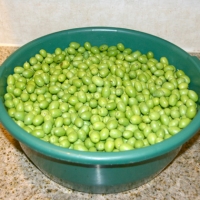 Olives ready
Close
Olives ready
Close
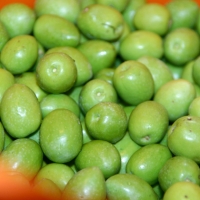 Close up
Close
Close up
Close
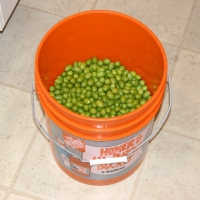 In the bucket
Close
In the bucket
Close
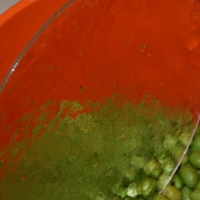 Plastic to cure
Close
Plastic to cure
Close
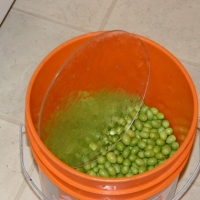 Ready to cure
Close
Ready to cure
Close
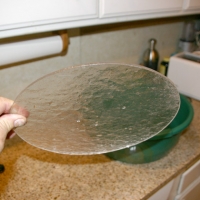 Plastic lid
Close
Plastic lid
Close
 Four buckets ready
Close
Four buckets ready
Close
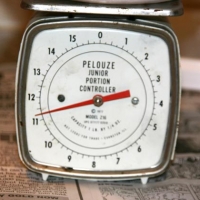 Weighing the Lye
Close
Weighing the Lye
Close
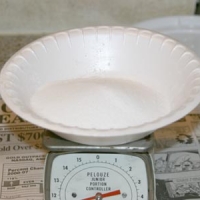 LYE!!!
Close
LYE!!!
Close
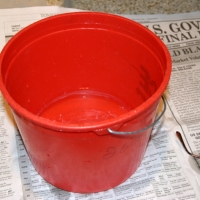 One gallon bucket
Close
One gallon bucket
Close
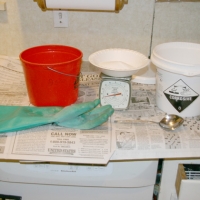 All the stuff
Close
All the stuff
Close
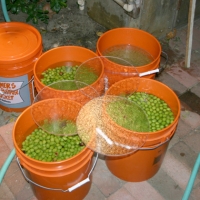 Buckets with lye
Close
Buckets with lye
Close
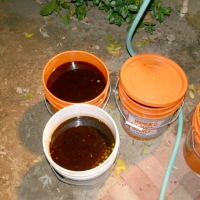 Lye is working
Close
Lye is working
Close
 Finished Lye part
Close
Finished Lye part
Close
 Plastic floaters
Close
Plastic floaters
Close
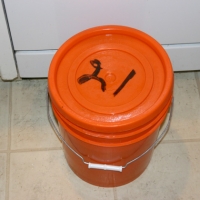 Numbered bucket
Close
Numbered bucket
Close
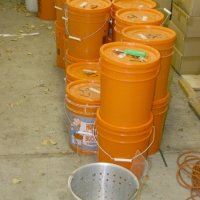 Serious production
Close
Serious production
Close
 Rabbit ears
Close
Rabbit ears
Close
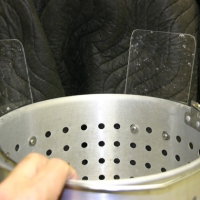 Another view of ears
Close
Another view of ears
Close
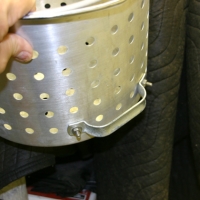 Helper handle
Close
Helper handle
Close
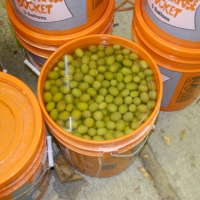 Finished bucket
Close
Finished bucket
Close
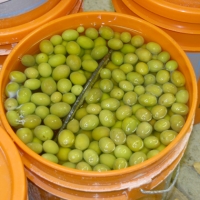 Finished without plastic
Close
Finished without plastic
Close
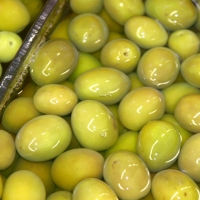 Finished close up
Close
Finished close up
Close
 Desalting
Close
Desalting
Close
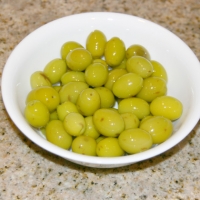 Ready to eat
Close
Ready to eat
Close
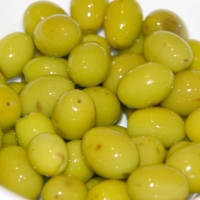 Clsoe up ready to eat
Close
Clsoe up ready to eat
Close
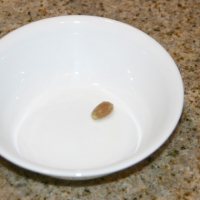 All gone
Close
All gone
Close
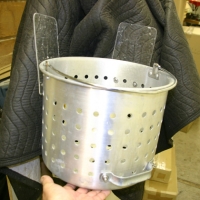 The strainer bucket
Close
The strainer bucket
Close
People Who Like This Dish 4
- notyourmomma South St. Petersburg, FL
- cheryilyn Salem, OR
- zena824 Somewhere, USA, AR
- organicmama CA
- jennyhs Deland, FL
- boilingwater San Jose
- nehmalo ALTA, IA
- thegoldminer Sacramento, CA
- Show up here?Review or Bookmark it! ✔
The Rating
Reviewed by 7 people-
This is very interesting. Can't believe someone gave it one fork. Thanks for the post.
 frankieanne
in Somewhere loved it
frankieanne
in Somewhere loved it
-
JJ this sounds interesting for sure....Thanks for sharing this with us.....
 zena824
in Somewhere, USA loved it
zena824
in Somewhere, USA loved it
-
interesting and great pictures too. thanks for the lesson.
 cheryilyn
in Salem loved it
cheryilyn
in Salem loved it
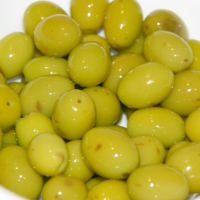


Reviews & Comments 20
-
All Comments
-
Your Comments
" It was excellent "
" It was excellent "
" It was just okay "
" It was excellent "
" It was excellent "
" It was not good "